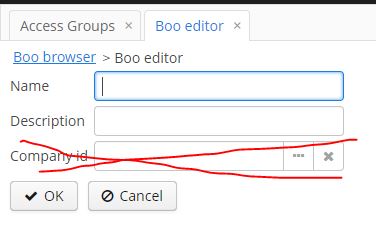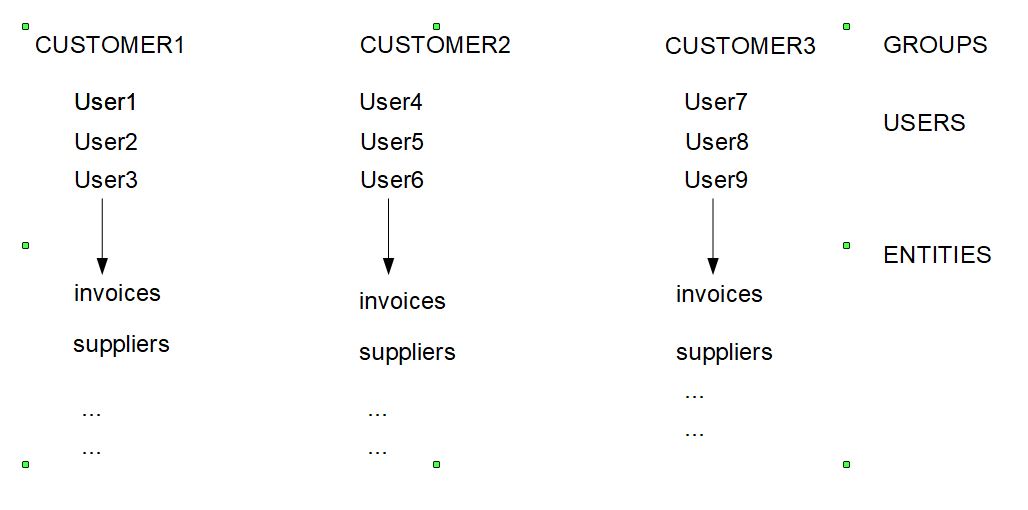Surely it’s me that I can not explain in English. 

Unfortunately, this example is the same as the demo sample-workshop, even in this case the user chooses the company manually. NO, I create this group / customers as an administrator before selling the service, the user must not choose his company, he must not even know the existence of other companies that use the web app, he does not have to notice anything, so he creates a line of all the entities of the application the data of his id company must be entered automatically. No user must see lines of entities from other companies.
Reading on the forum my problem is MULTIPLE DATABESE VS cuba traditional approach muti-tenancy - one database.
I usually create a single web application and every my customers/Company that uses it (which has more users) has its own database. I have many completely identical databases. When Company1 user logs “USE …” the company1/customer1 database.
Users of Company1/Customer1 when they log in see only the data of their Company for example entity invoices, suppliers …
Users of Company2/Customers2 when they log in see only the data of their Company for example entity invoices, suppliers …
if I use CUBA with a single database where everyone has access, ok when user READ “use” filters contraints but when the user of Company1 creates an invoice, does not say that belongs to Company1, it is obvious, he does not even know the existence of company2.

if Cuba does not manage or advise against the concept of mutiplidatabase, how can I solve this problem?
Before moving to the commercial version I have to understand if I can keep the data of my customers divided with CUBA. I have to convince my boss.
I have
one web application
N * Customers who have N * users
if I have only one database and for example a user has to enter a supplier of his company, he does not have to tell which company he belongs to. in what way it creates the supplier I must have in memory his company / customer ID to be saved in the new row.

Thank you.




